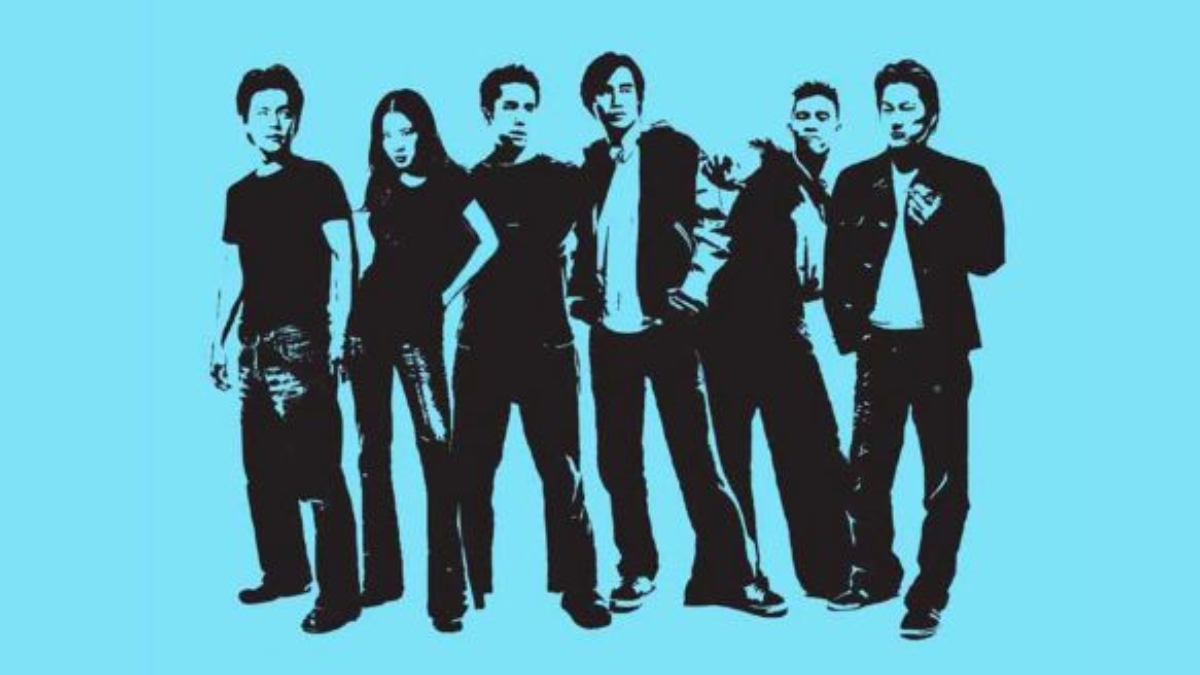Tackling the legacy of the greatest Asian American film
This article contains spoilers.
On October 4, 2019, the LA Times’ released an article titled “The 20 best Asian American films of the last 20 years.” And number one on their list was the 2002 crime drama, “Better Luck Tomorrow.”
If you’re under a certain age, that name might mean nothing to you. But if you’re an Asian, or in my case, Wasian male born in the 90s, it’s probably a film that holds a special place in your heart. Specifically, for showcasing a version of Asian masculinity that hadn’t really been seen up to that point. I remember watching the film for the first time, and being amazed by the characters, a group of disaffected Asian high schoolers who were smart, aggressive, sexual, and thoroughly American in their dress and speech. It was the only time I’d seen Asian men in an American movie that reminded me of my father, and I loved it. And I wasn’t the only one. The film played at both Sundance and Toronto, got rave reviews, with it currently holding an 81% approval rating at Rotten Tomatoes, and made more than 15 times its $250,000 budget at the box office. The movie’s success single-handedly launched the director, Justin Lin, into a career of mainstream Hollywood filmmaking. A career that would include no less than five entries in the “Fast & Furious” franchise. In short, “Better Luck Tomorrow” was kind of a big deal, and it just turned 20 this year, so I thought it might be a good idea to take a look at it again. Not just to see how it holds up, but as a means of charting how AAPI cinema has changed over the past 20 years. But first, what is “Better Luck Tomorrow?”
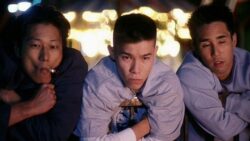
The movie tells the story of Ben, played by Parry Shen, an overachieving high schooler who, out of boredom and disillusionment, joins a fellow honor student’s gang. The group, which consists of Daric (Roger Fan), Ben’s best friend, Virgil (Jason Tobin), and Virgil’s cousin, Han (Sung Kang), carry out various bits of petty crime, like selling cheat sheets. The authorities never give them trouble, mostly because they don’t think these nerdy Asian guys can do anything wrong. As Ben puts it in voiceover, “Our straight A’s were our alibis. Our passports to freedom.” As time goes on, however, their activities grow in severity, until they’re both selling and using drugs. In Virgil’s case, he becomes increasingly violent after a fight at a party. Things come to a head when Steve, played by John Cho, recruits the gang to rob his own parents. Instead, the boys, who are jealous of Steve, decide to use the job to “give him a wakeup call.” In Ben’s case, he personally resents Steve because the latter is his romantic rival for a cheerleader named Stephanie (Karin Anna Cheung). Unfortunately for the gang, the “wakeup call” winds up going horribly wrong, resulting in Steve’s death, and subsequent burial in the backyard of their friend’s house. Virgil, overcome with guilt at having killed someone, attempts suicide, and the film ends with Ben wondering what the future will hold for them.
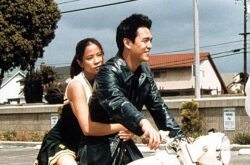
As you can tell from that summary, the flick is no one’s idea of a walk through the park. It is gritty, violent, sad, and having just rewatched it for the first time in many years, I still think it has the power to get under your skin. Some of this is down to good acting. Everyone has charisma to spare, and is able to show a wide range of emotions. Some of this is down to good filmmaking. The scene where the gang murders Steve is done in a continuous, 360 degree shot, with a single lightbulb hanging overhead, which enhances the intensity and grossness of the moment. And some of this is down to good writing. A recurring bit throughout the film is Ben memorizing various SAT words, which wind up mirroring his state of mind. It’s a small but clever means of getting the audience to understand the character and themes better. I completely understand why the film got into Sundance and Toronto, and why Justin Lin was able to leap to bigger-budget Hollywood projects afterward.
That said, I don’t think the movie would have nearly the same impact if it were released now. Part of this is due to the fact that the film is clearly the product of a different time. Characters have flip phones and CD players. Everyone has spiky, gelled hair. The teens, who all look 30 (because they are), dress like the members of Limp Biscuit, meaning they’ve got oversized t-shirts, baggy jeans hanging around their butts, and upside-down, sideways tennis visors. And the characters are anything but politically correct. Ben says the word “fag” more than a few times. There’s a scene at a debate practice where the gang jokes about whether or not it’s right to sterilize “retarded” kids. And at one point, Virgil brushes off a friend’s concern with a “nigga, please.” A lot of these jokes would not fly today.
The portrayal of women is also questionable. There’s only one female character, Stephanie, and she primarily serves as an object to be lusted after. Yes, the film does give her a backstory—she’s adopted, she’s in therapy, she wants to be a cop—but those are all things we hear, rather than see. There’s also a strange recurring gag where Virgil is convinced that he saw Stephanie in a porno, and even shows what he thinks is her movie to Ben. This is all … very odd, to say the least. These actors are all adults, but if we’re meant to buy that they’re teenagers—Ben celebrates his 17th birthday in the movie—that means that they’re looking for porn with an underaged girl in it. Not only that, but them believing that Stephanie has done porn just reinforces the idea of her as an object to be desired. In other words, this is not a movie you’d call “intersectional.” It’s entirely about reclaiming straight, Asian masculinity. And, as a result, it does come off as a bit toxic at times.
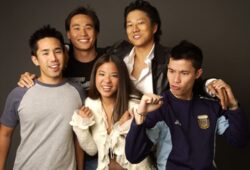
That said, I still enjoy the movie. And I don’t think it should be erased from the canon of AAPI cinema. If anything, the fact that it is dated just goes to show how far we’ve come in the last 20 years. I think it’s wonderful that people like my cousin, meaning Asian Americans born after 2002, have grown up with so many different mainstream films and TV shows starring people who look like them. But what kids like them don’t realize is that, if you were a teenager back in 2001, you basically had no mainstream Hollywood representation beyond the animated “Mulan,” and “The Joy Luck Club.” And neither of those was the sort of thing teenage boys were going out of their way to see. So if you were a 16-year-old Asian male back then, and you wanted to see a movie about people who looked and acted like you, you had to make it yourself. That is precisely what Justin Lin did.
The movie was an entirely independent production, with Lin maxing out his credit cards to pay for it, and the actors deferring their salaries to get the project made. The reason for this, as explained in a 2016 New York Times article, was that no investors believed a film with an all-Asian cast would sell. One potential financier even said they’d only put up the money if he changed the leads to be white. Lin refused, believing that his vision for the film would pay off, and nearly went bankrupt as a result. And it still wasn’t enough to finish the project. At one point, when he realized that he might not be able to complete the film, Lin, out of desperation, contacted MC Hammer, whom he’d met one time while working at the Japanese American Museum. And, much to his surprise, MC Hammer, who liked the script, wired him $10,000. That was enough to finish post and get the film into festivals like Sundance and Toronto. After winning various awards and getting some positive write-ups from critics like Roger Ebert, the movie was picked up for distribution by MTV. And the rest, as they say, is history.
This is a genuinely inspiring tale, not just for Asian Americans, but for independent filmmakers as well. Here was a group of people who no one believed in, but who were so determined to tell their own story that they put up their own money to make their dream a reality. And, in the end, it worked out. Virtually everyone in this movie went on to greater success. I already mentioned how Justin Lin directed multiple “Fast & Furious” movies, but Sung Kang wound up starring in several as well, with the latter’s role as Han becoming a mainstay of the franchise. John Cho became a full-fledged leading man with starring roles in the “Harold & Kumar’‘ trilogy, “Star Trek” reboot films, “Searching,” and Netflix’s “Cowboy Bebop.” And since 2019, Jason Tobin has had a leading role in Cinemax’s “Warrior.”
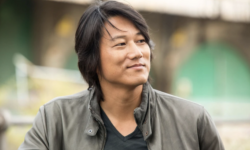
I genuinely don’t think we’d have films like “Searching,” or “Everything, Everywhere, All At Once,” without “Better Luck Tomorrow.” It was the film that proved that independent movies made by, and starring, Asian artists could win awards and make money. Likewise, I don’t think directors like James Wan or Cathy Yan would have been given the chance to direct blockbusters if Justin Lin hadn’t proved that it was “safe” for studios to invest in Asian filmmakers. And, of course, he only got the chance to work in blockbusters because of “Better Luck Tomorrow.” So, yes, the film hasn’t aged well in some areas. But to dismiss it for being a little dated when it did so much, not just for the Asian artists who worked on it, but for subsequent AAPI filmmakers and actors, is ridiculous. And, like I said, the film is still well-directed and acted, so it does have merit beyond simply serving as a stepping stone. I can’t say if modern teens will respond to it, but I know that I still admire it, and that it has more than earned its place In film history.

